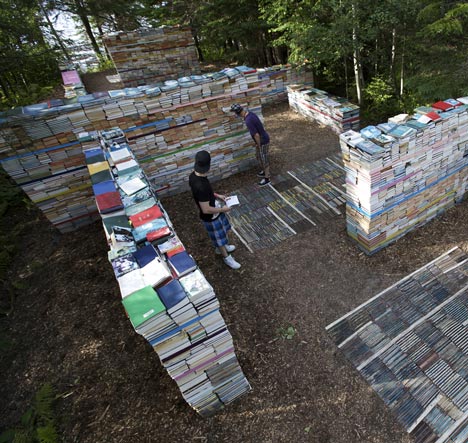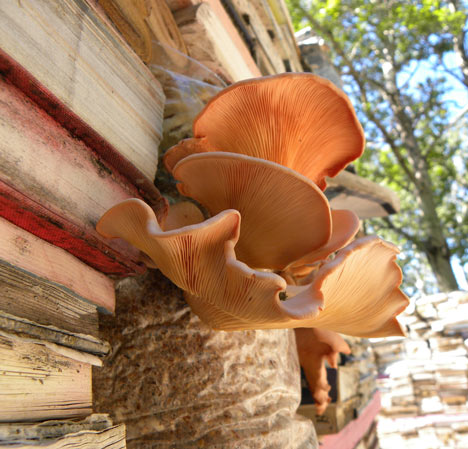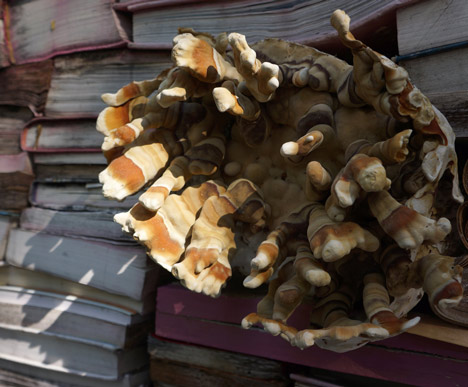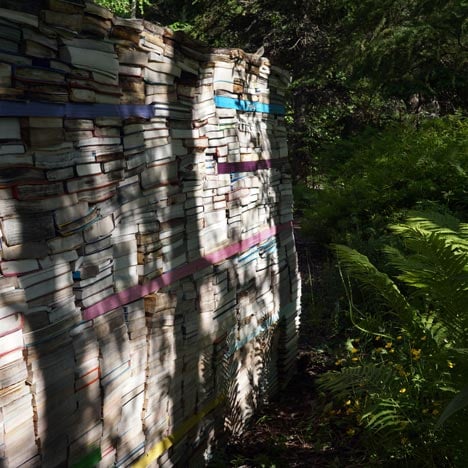Jardin de la Connaissance by Rodney LaTourelle and 100 Landschaftsarchitektur – update
We've been sent an update from Jardin de la Connaissance, the garden of decaying books in Quebec which we featured back in 2010: the books are now sprouting enormous orange mushrooms, and this year the designers introduced moss.

The garden was designed by Berlin landscape architect Thilo Folkerts of 100 Landschaftsarchitektur and Canadian artist Rodney LaTourelle.

Books were piled up to create walls, rooms and seats which are slowly rotting to become part of the forest.

Mushrooms are being cultivated on the books to speed up their decay and now moss has been applied with a wet mixture they call 'moss graffiti'.

The installation was originally designed for the International Festival des Jardins de Metis two years ago - see earlier photos of its decay here.

See all our stories about gardens »
Here's some information from the architect and artist behind the project:
The Jardin de la Connaissance was established in June 2010. Since then, the garden has been interacting with the forest. The book structures have decayed in the natural setting, but have also provided various micro-environments for a range of local creatures.
Seedlings and insects have activated the walls, carpets and benches. Mushrooms - those cultivated and those who have come by themselves - have made the garden their home. Many of the originally bright colours of the books have faded. Culture is fading back into nature.
For the third season of the Jardin de la Connaissance, the authors want to extend the garden’s transformation by applying a technique originating in recent urban culture, following a renewed sense of being active in the open spaces of the city. Sampled moss from the forest is applied onto the walls as a paint mixture, a so-called ‘moss graffiti’. While the success of actual growth is somewhat open - as with all good experiments - the cover of moss material will aesthetically expedite the slow disappearance of the garden back into the forest.
Thilo Folkerts, Rodney LaTourelle, 2012